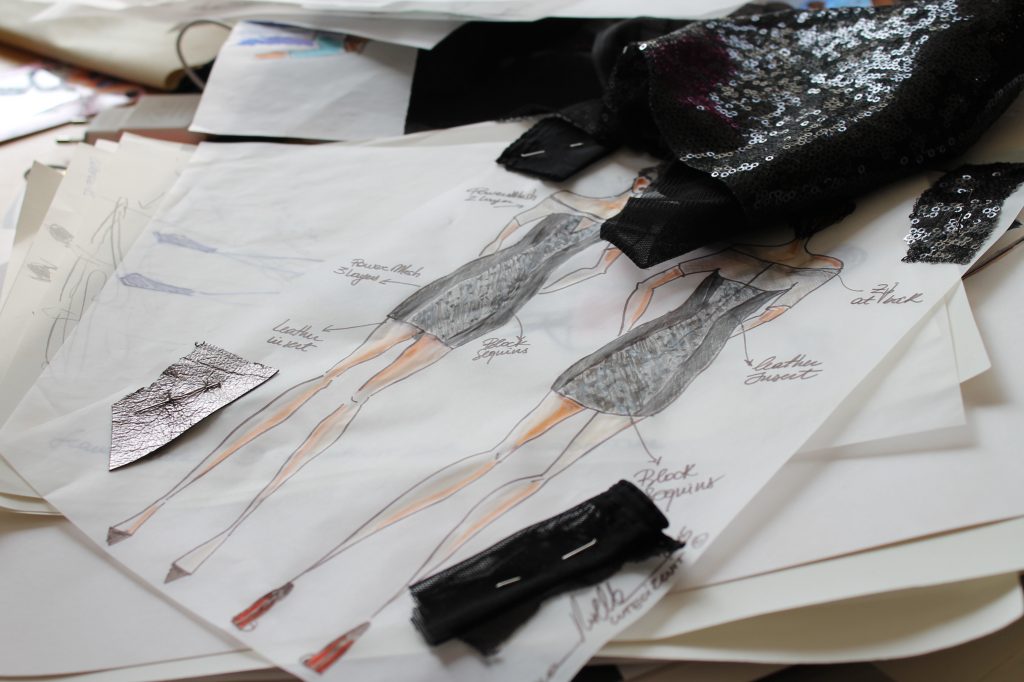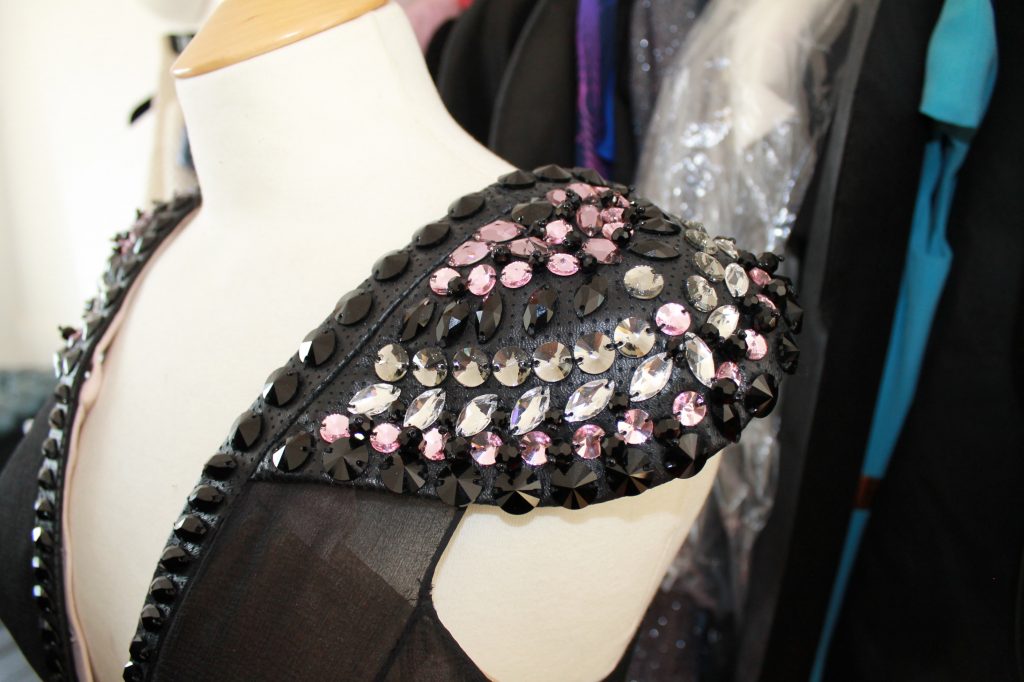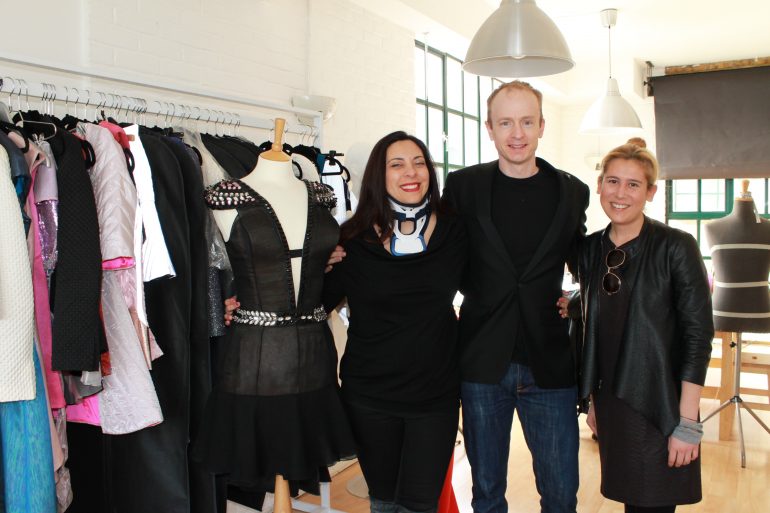When Francesca Rosella was a little girl she was obsessed with making her Barbie’s dresses change color. Back then she would splash dye on her doll’s dresses; today, she is bringing this dream to reality with the help of wearable technology.
Rosella is one-half of CuteCircut, an innovative fashion house that has been pushing the boundaries of fashion and technology with wearable tech since its launch in 2004. CuteCircuit’s LED and haptic-enabled clothing have been worn by the likes of Katy Perry, Nicole Scherzinger, and U2, and were the first to launch a technologically-infused ready-to-wear line to major fashion retailers.
CuteCircuit is most known for its Hug Shirt, a project that Rosella and partner Ryan Genz developed back in 2002. The Hug Shirt lets users share hugs over distance, using sensors and actuators to simulate a hug that is sent from a smartphone app to the shirt via Bluetooth. The Hug Shirt is the world’s first Touch (Haptic) Telecommunication Device. It went on to win Best Invention of the Year by Time Magazine in 2006 and was reimagined this year as part of CuteCircuit’s AW14/15 runway show at New York Fashion Week.

I met up with Francesca and Ryan at a coffee shop across from their studio in Shoreditch while I was in London. We began our chat by talking about the current landscape of wearables. I asked them what they thought about many of the fashion-gadget collaborations that we started to see pop up at CES this year.
“I am not a big fan of just doing a surface treatment and saying that that completely changes the concept of the product,” Ryan told me. “When we talk about designing wearables, we design the whole thing, we even make sure that the circuit boards are beautiful. You know the story of the first Apple II? They signed the circuit board because it was beautiful; we have always tried to take an entirely holistic approach to our product design and I think that good product development does that.”
Francesca echoed this point, stressing that the disconnect between fashion and tech teams result in lackluster products. “Sometimes I just feel like there are these technology brands that say ‘we’ve made these sensors really small so lets try to find the fashion brand that wants to dress it up,’ and the poor fashion designers that do not have any idea about interaction design say, ‘what does this sensor do? It counts your steps? Cool, I don’t care I’ll just make it look like a gold bracelet.’ There is just such a disconnect and I think that the user can see through poor design and poor intentions.”
“I think that what we are seeing in the wearable space up until this point are tech companies trying to find a new market for their tech by shoehorning it into fashion,” added Ryan. “And I think that when you are going to see wearables become really awesome is when we start to do the opposite, when fashion companies start using tech to amplify fashion functions.”
“When we talk about designing wearables, we design the whole thing, we even make sure that the circuit boards are beautiful.”
But despite the number of companies getting it wrong, both are adamant that wearable tech is not a fad. “People keep asking us if wearable technology is a fad,” said Francesca. “There is technology in healthcare, there is technology in automotive, there is technology in communications – yet no one is asking if there is a fad in using technology in healthcare. Are we going to stop doing MRIs? No, obviously not, there is progress. We live in 2015 not 1905 and so, as fashion designers, if there are tools that are digital they have to be used.”
But the role of the designer needs to change in order to accomplish this. For both of these pioneers, the key to success for this space lies in the creation of a new hybrid designer, one who is as savvy in fabrics as they are in code. “Twenty years ago you needed to know the difference between a warp and weft, knit and woven, synthetic and natural fibers and these are all engineering aspects of fashion design. If fashion design is going to embrace digital technology, it’s important that you have a basic technical literacy,” explained Ryan. “We are living in the 21st century where designers can take advantage of all the materials and technology available to make our designs as exciting as possible.”
This doesn’t mean that a designer needs to become an engineer. “I think that it’s the communication system that needs to change,” Francesca explained. “It’s not that everybody needs to know code, but at least they should understand the logic of it so that if I wanted to come up with some amazing functionality for my wearable I know what to ask. I think that this is what is missing.”

The future for CuteCircuit contains products that make use of both design and tech skills in harmony to help wearables move into the background and just become the clothes we wear. “In ten, fifteen years if we are conservative, there will be no more cameras, no more watches, no more trackers, everything will be miniaturized inside our clothing,” said Francesca. “I could be wearing a piece of sportswear, ready-to-wear, a suit or jacket – these will all have functionality built into them where if you want, you can use them or you can just decide to switch it off.”
But for CuteCircuit, this functionality isn’t always about tracking and gathering data. The duo believes that “wearables are the interface between humans so that we can express ourselves in a way that is more emotional and engaging,” and it shows in their collections. Their Twitter dress for Nicole Scherzinger is a good example of this. Its intent was to allow Scherzinger’s fans to be with the star on the red carpet, by showing their tweets in real-time when she was at the award show.

CuteCircuit is a big fan of incorporating tweets into its clothing but not for the reason you might think. “If I am really obsessed with my phone then I will read my tweets over and over and over on the device,” explained Francesca. “But if I stream the tweets on clothing, I will read the first two, three or four, and then I become mesmerized by all the lights and I stop reading them; I think it’s like curing people out of their addiction.” As Ryan told me, these types of wearables “unchain you from the screen” by freeing you to engage with those around you.
This notion of wearables curing us of our smartphone affliction is a recurring sentiment shared by the likes of Google and Apple. In fact, a recent Wired report entitled “iPhone Killer: The Secret History of the Apple Watch” highlighted the fact that Apple’s newest wearable is designed to save us from the iPhone.
Right now, it’s a little hard to imagine how a world filled with tweeting dresses and LED shirts would be less distracting than our vibrating smartphones. But Ryan believes it’s better than the alternative. “When I get a Tweet from someone on my phone it’s private, but when I get it on my dress its no longer private, so I am obligated to engage socially with you – especially if you find it funny or interesting,” he said. “It is an icebreaker but it is also a kind of ambient interface. You don’t need to explicitly dig out your phone and separate yourself from the conversation.”
Perhaps if this future is realized, tweets and other data will simply become a design all in itself. “After a while you stop reading it and caring about the tweet itself,” Francesca added. “Think of the tweet as a decorative pattern.”


